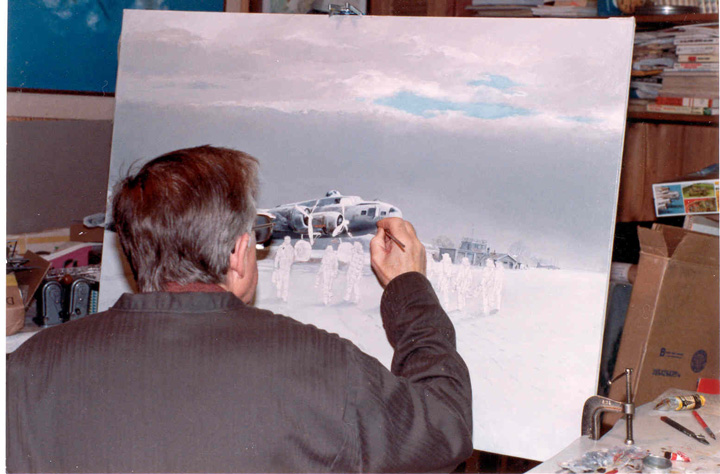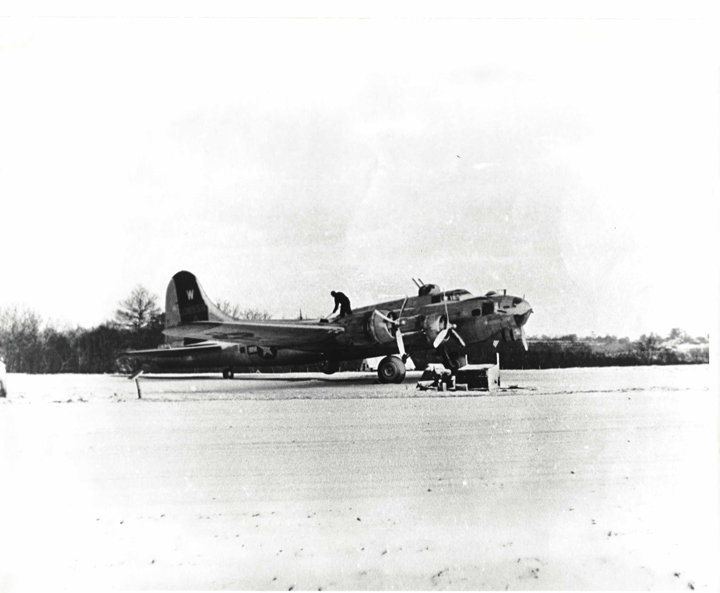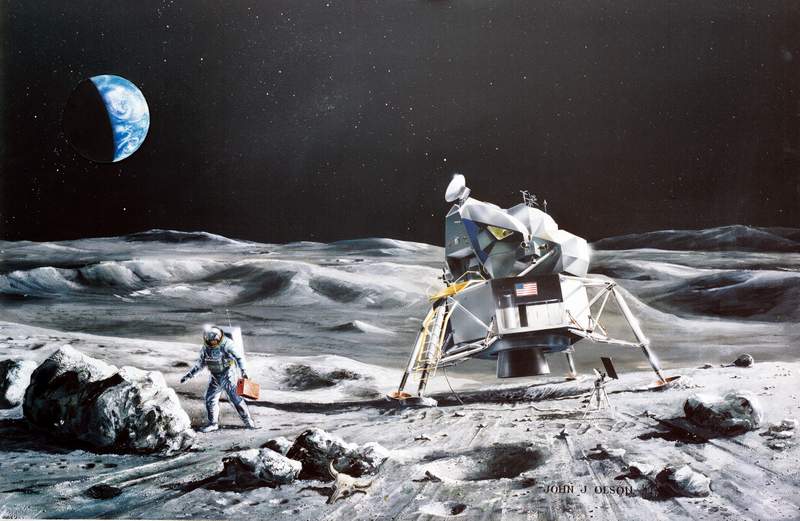John (Jack) Jacob Olson
Jack was born October 24, 1922 in Bottineau and grew up on the family farm in Souris, North Dakota, near the Canadian border. He graduated from Bottineau High School and the School of Forestry (now MSU-Bottineau.) He then attended University of North Dakota in Grand Forks before enlisting in the Army Air Corps. In 1943, he completed bomber training at Washington University in St. Louis, MO and was awarded his silver pilot wings, which he considered to be his proudest achievement.
He served in the Army Air Corps in World War II as a B-24 instructor pilot. Jack successfully landed his four-engine B-24 bomber after losing over 15 feet of one wing in a midair collision, saving 14 crewmembers and passengers onboard. At the end of World War II, Jack left the service and graduated from the Minneapolis School of Art and Design. He later received a bachelor’s degree in Aeronautical Science from Central Washington University.
In 1950 he joined Brown & Bigelow as the chief designer in metal and plastic products. While working there he received 120 mechanical and design patents and in 1951 his design of the now famous Tupperware Party favor, “the pickle plucker” received the National Design in Plastics award.
In 1958 Jack joined the Boeing Aerospace division ultimately holding the title of Principal Engineer in Concept and Design. His first project at Boeing, before joining the Aerospace division was a mass-transit system in Morgantown, W.Va. He soon became widely recognized for his visionary concept designs, and illustrations of spacecraft and space exploration. His projects involved a concept that paralleled the later design of the Hubble Space Telescope, the design of Boeing’s bid to NASA on the Moon Lunar Excursion Module (LEM), a manned Mars outpost, and a solar power satellite project. He considered the concept of using the barren land beneath the solar power satellite as a greenhouse, which could provide food for a city of a million people, as one of his most exciting projects. Jack was also responsible for the concept and detail design of the Boeing Jetfoil, now plying the waters of the English Channel and Hong Kong, the design patent of which he shares with another engineer.
Forced into early retirement in 1984 because of medical problems, he continued to do consultant work for Boeing and NASA. In 1985 he was honored with a one-man show of his spacecraft design illustrations at the Smithsonian’s Air and Space Museum in Washington DC. Twenty-one of these paintings are now part of the permanent Smithsonian collection.
Jack enjoyed flying sailplanes and earned all three legs of the Diamond badge from the Soaring Society of America. He was a pilot and instructor for 20 years. He also enjoyed painting, photography, woodworking, music, and was a history buff. His illustrations have been included in several textbooks and coffee-table books and have appeared in numerous periodicals and products globally. Among other achievements, he was a master Photographer in the Photographic Society of America, a member of Epigraphic Society and of the Soaring Society of America and occupied a chair on the National Space Society Board of Governors.
In 1994, he retired to a summer home on Lake Louise in Bottineau County, North Dakota. He joined the Bottineau Men’s Choir. He became active in civic affairs promoting the city of Bottineau. Among many ideas to bring attention to the city, he designed an informational Kiosk and organized a national soaring contest in Bottineau to promote gliding in North Dakota. In December of 2000, he and his wife returned to their home in Normandy Park near Seattle, Washington. On August 28, 2001 he lost his 14-year battle with cancer.
Addendum:
- Information about Jack Olson was provided by his step son, Robert (Kip) Malaska in August 2005.
- About the author and painter Jack Olson in a downloadable pdf file.
- The first photograph below was taken by Jack Olson's wife while he was painting Clearing and Colder with the 398th's colors.
- The second photo below is the original 398th photo that was the model for Clearing and Colder.
- The third photo below is one of John J. Olson's many space paintings on display at the National Air and Space Museum.
- A Brief Visit Home by Jack Olson, a story about Jack's cadet training and a the day he buzzed the family farm in a B-24. Note the story is a downloadable pdf file.

Painting Clearing and Colder with the 398th's colors

Original 398th Photo model for Clearing and Colder

